Sind 14,8 Volt zu hoch zum Laden von Lithiumbatterien?
Das korrekte Laden von Lithiumbatterien ist entscheidend für ihre Leistung, Langlebigkeit und Sicherheit. Viele fragen sich, ob 14,8 Volt zum Laden von Lithiumbatterien zu hoch sind, da falsche Ladespannungen zu Überhitzung, verkürzter Lebensdauer oder sogar zu gefährlichen Situationen führen können. Das Verständnis der richtigen Spannungsparameter ist entscheidend, insbesondere für diejenigen, die Lithium-Ionen- oder Lithium-Eisenphosphat-Batterien (LiFePO4) in Anwendungen wie Solarspeichern, Elektrofahrzeugen oder Notstromsystemen verwenden.
In diesem Artikel untersuchen wir, ob 14,8 Volt zum Laden von Lithiumbatterien geeignet sind, wie verschiedene Lithiumchemikalien auf Ladespannungen reagieren und welche Best Practices für sicheres und effizientes Laden gelten. Am Ende dieses Artikels wissen Sie, ob 14,8 Volt für Ihre Lithiumbatterien geeignet sind oder ob Sie Ihre Ladekonfiguration anpassen müssen.
- Grundlegendes zu den Spannungsanforderungen zum Laden von Lithiumbatterien
- Sind 14,8 Volt zum Laden von Lithiumbatterien sicher?
- Best Practices zum sicheren Laden von Lithiumbatterien
- Sind 14,8 Volt zum Laden von Lithiumbatterien zu viel?
Grundlegendes zu den Spannungsanforderungen zum Laden von Lithiumbatterien
Wie sich die Spannung auf das Laden von Lithiumbatterien auswirkt
Beim Laden von Lithiumbatterien spielt die Spannung eine entscheidende Rolle für deren Zustand und Leistung. Jeder Lithiumbatterietyp hat einen bestimmten Spannungsbereich zum Laden und Entladen. Das Überschreiten dieses Bereichs kann zu Sicherheitsrisiken oder dauerhaften Schäden führen.
Die meisten Lithium-Ionen-Akkus arbeiten mit einer Nennspannung von 3,6 V oder 3,7 V pro Zelle. Eine vollständig geladene Lithium-Ionen-Zelle erreicht typischerweise 4,2 V. Da Lithium-Ionen-Akkupacks aus mehreren in Reihe geschalteten Zellen bestehen, wird ihre Gesamtspannung durch die Anzahl der Zellen bestimmt.
Ein 4-Zellen-Lithium-Ionen-Akkupack (4S) verfügt beispielsweise über:
- Eine Nennspannung von 14,8 V (3,7 V × 4 Zellen)
- Eine vollständig geladene Spannung von 16,8 V (4,2 V × 4 Zellen)
Somit liegen 14,8 Volt tatsächlich im normalen Betriebsbereich eines 4-Zellen-Lithium-Ionen-Akkupacks und sind nicht unbedingt zu hoch. Bei anderen Lithium-Chemikalien wie LiFePO4, das eine niedrigere Vollladespannung aufweist, können 14,8 V jedoch zu hoch sein.
Verschiedene Arten von Lithiumbatterien und ihre Ladespannungsgrenzen
Nicht alle Lithiumbatterien sind gleich, und ihre Ladespannungen variieren je nach chemischer Zusammensetzung. Nachfolgend finden Sie die gängigen Lithiumbatterietypen und ihre empfohlenen Spannungsbereiche:
1. Lithium-Ionen-Batterien (Li-Ionen)
- Nennspannung pro Zelle: 3,6 V – 3,7 V
- Maximale Ladespannung pro Zelle: 4,2 V
- Spannungsbereich des 4S-Akkupacks: 12 V (leer) – 16,8 V (voll geladen)
Bei Lithium-Ionen-Akkus sind 14,8 V eine sichere Spannung zum Laden eines 4S-Packs, da sie unter der maximalen Spannung von 16,8 V liegt.
2. Lithium-Eisenphosphat-Batterien (LiFePO4)
- Nennspannung pro Zelle: 3,2 V – 3,3 V
- Maximale Ladespannung pro Zelle: 3,6 V – 3,65 V
- Spannungsbereich des 4S-Akkupacks: 12,8 V (nominal) – 14,6 V (vollständig geladen)
Für LiFePO4-Batterien sind 14,8 V zu hoch , da die empfohlene volle Ladespannung 14,6 V beträgt. Das dauerhafte Laden von LiFePO4-Batterien mit 14,8 V kann zu einer Überladung führen, die die Lebensdauer verkürzt und Sicherheitsrisiken birgt.
3. Lithium-Polymer-Akkus (LiPo)
- Nennspannung pro Zelle: 3,7 V
- Maximale Ladespannung pro Zelle: 4,2 V
- Spannungsbereich des 4S-Akkupacks: 12 V – 16,8 V
Wie Lithium-Ionen-Akkus können LiPo-Akkus 14,8 V in einer 4S-Konfiguration sicher verarbeiten , aber Akkus mit geringerer Zellenzahl (z. B. 3S-Packs) sollten bei dieser Spannung nicht geladen werden.
Sind 14,8 Volt zum Laden von Lithiumbatterien sicher?
Wann 14,8 V zum Laden von Lithiumbatterien sicher sind
14,8 V sind unter den folgenden Bedingungen sicher:
- Sie laden einen 4S-Lithium-Ionen- oder LiPo-Akku . Da diese Chemikalien eine volle Ladespannung von 16,8 V haben, liegen 14,8 V durchaus im sicheren Ladebereich.
- Sie verwenden ein kompatibles Ladegerät – Ein hochwertiges Ladegerät mit integriertem Schutz sorgt dafür, dass die Spannung stabil bleibt und der Akku nicht überladen wird.
- Sie laden mit einem sicheren Strom – Das Laden mit der empfohlenen C-Rate (normalerweise 0,5 C bis 1 C) verhindert eine übermäßige Wärmeentwicklung.
Wenn 14,8 V zum Laden von Lithiumbatterien zu hoch sind
14,8 V sind in folgenden Fällen zu hoch :
- Sie laden LiFePO4-Batterien – Die volle Ladespannung für eine 4S-LiFePO4-Batterie beträgt 14,6 V , daher können 14,8 V zu einer Überladung führen.
- Sie laden einen 3S-Lithium-Ionen- oder LiPo-Akku – Ein 3S-Akku sollte nur bis 12,6 V geladen werden, 14,8 V würden ihn überladen.
- Ihrem Ladegerät fehlt eine Spannungsregelung – Wenn ein Ladegerät nicht über die richtigen Steuerungen verfügt, können Spannungsschwankungen die Batterie über die sicheren Grenzen hinaus belasten.
Best Practices zum sicheren Laden von Lithiumbatterien
Um sicherzustellen, dass Lithiumbatterien sicher geladen werden, befolgen Sie diese bewährten Vorgehensweisen:
1. Verwenden Sie das richtige Ladegerät für Ihren Batterietyp
Verwenden Sie immer ein Ladegerät, das für Ihre spezielle Lithiumchemie ausgelegt ist. Ein LiFePO4-Ladegerät sollte nicht für Lithium-Ionen- oder LiPo-Akkus verwendet werden , da deren Spannungsanforderungen unterschiedlich sind.
2. Überwachen Sie die Ladespannung und den Ladestrom
Die Verwendung eines Batteriemanagementsystems (BMS) oder eines intelligenten Ladegeräts hilft bei der Regulierung der Spannung und verhindert Über- oder Unterladung.
3. Überladung und Überhitzung vermeiden
Übermäßige Spannung oder Stromstärke können die Leistung der Batteriezellen mit der Zeit beeinträchtigen. Behalten Sie die Batterietemperatur im Auge und beenden Sie den Ladevorgang, wenn die Batterie zu warm wird.
4. Laden Sie in einer sicheren Umgebung
Lithiumbatterien sollten immer in einem gut belüfteten Bereich, entfernt von brennbaren Materialien und vorzugsweise auf einer feuerfesten Oberfläche aufgeladen werden.
Sind 14,8 Volt zum Laden von Lithiumbatterien zu viel?
Sind 14,8 Volt also zu viel zum Laden von Lithiumbatterien ? Die Antwort hängt vom verwendeten Batterietyp ab. Beim Laden eines 4-Zellen-Lithium-Ionen- oder LiPo-Akkus sind 14,8 V völlig sicher und liegen im normalen Ladebereich. Bei einem LiFePO4-Akku sind 14,8 V jedoch zu hoch und können zu einer Überladung führen.
Die richtige Spannung zum Laden von Lithiumbatterien ist entscheidend für deren Leistung und Lebensdauer. Verwenden Sie immer das richtige Ladegerät , überwachen Sie die Spannungswerte und befolgen Sie die bewährten Verfahren, um ein sicheres und effizientes Laden zu gewährleisten.
Wenn Sie diese Richtlinien befolgen, maximieren Sie die Lebensdauer Ihrer Lithiumbatterien und vermeiden potenzielle Sicherheitsrisiken. Wenn Sie sich über die optimale Ladespannung für Ihren Batterietyp nicht sicher sind, beachten Sie immer die Empfehlungen des Herstellers oder verwenden Sie ein intelligentes Ladegerät mit integrierten Schutzfunktionen.



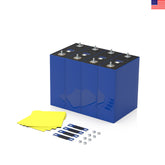
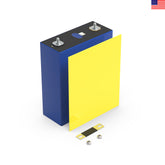


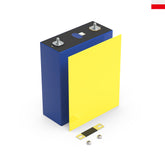

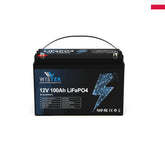
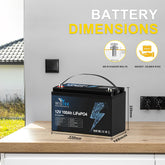


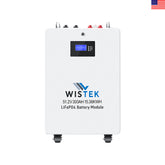
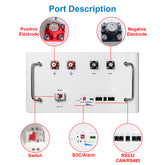
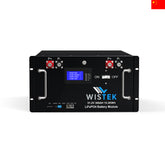
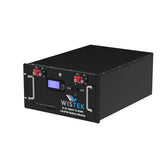


Leave a comment
All blog comments are checked prior to publishing